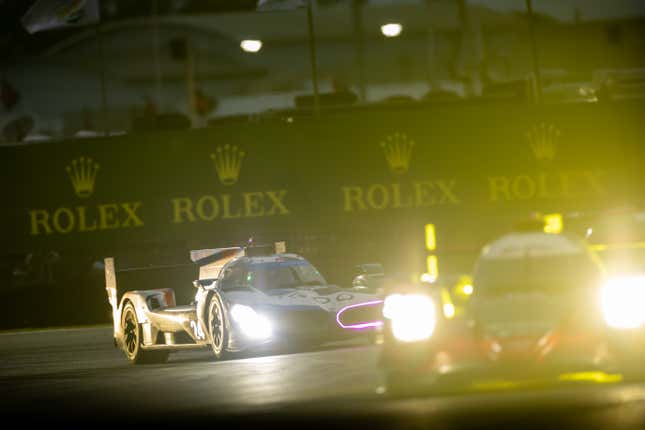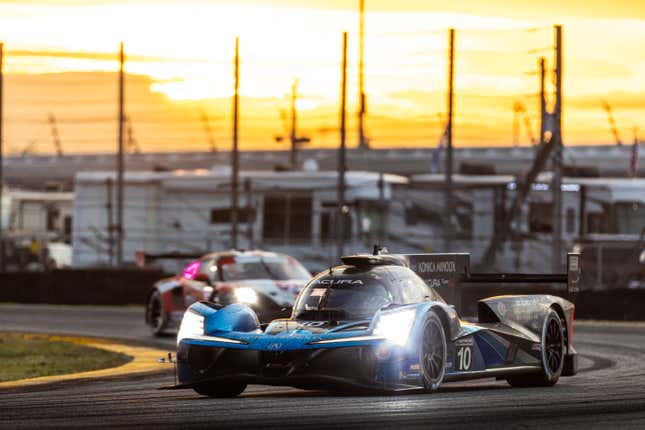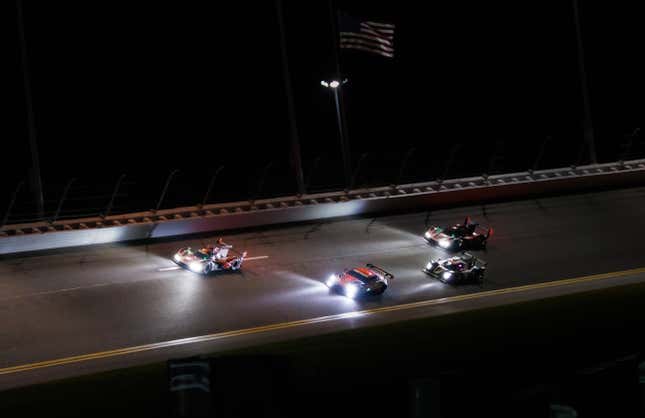You’ve seen the video Cadillac Racing released weeks ago, teasing its 2023 LMDh prototype race car. Once the music fades, the soundtrack is replaced with what sounds like an amplified RC car, screaming. It’s the sound of the Cadillac’s hybrid system working as the car takes off from the pit box under pure electric power. Just seconds later, your eardrums boom with the roar of the car’s naturally aspirated 5.5-liter V8 coming to life. In a vehicle with an enormously complex hybrid drive system, you’d assume the transition from electric to gas power would be a complicated dance. But the mechanics behind it are as simple as dropping the clutch.

Every car in the new-for-2023 Grand Touring Prototype class is required to utilize the same hybrid powertrain: a 1.35-kWh battery pack by Williams Advanced Engineering, a 50-kW electric motor-generator unit by Bosch, and an Xtrac gearbox. Each automaker in the GTP series — currently Acura, BMW, Cadillac and Porsche — designed and developed its own internal-combustion engine to pair with the spec hybrid system.
Things get complicated when you pair a brand-new, complex hybrid system with a variety of internal-combustion engines. For starters, if the hybrid system isn’t working, the car won’t work either. Jonathan Diuguid, Managing Director of Porsche Penske Motorsport, explained to me at Daytona that the car relies solely on the hybrid system to generate electrical power. “None of the cars out there have alternators. They’re all generating power through regen,” Diuguid said. Without an alternator or conventional starter, the GTP hypercars utilize the battery, along with the gearbox-mounted MGU, to get the car moving and make the transition to combustion engine power. The problem is, if the hybrid system isn’t working, the internal combustion engine won’t work either, and the car will be bricked.

Cadillac Racing’s Assistant Program Manager, Kalvin Parker, further broke down how the two propulsion systems work together on track. The electric motor initially gets the car in motion from the pit box. “Once the car hits the top pit speed, the driver can start the engine just by letting out the clutch.” The clutch, in this case, is a button on the dashboard; when the driver presses the button, the computer engages the clutch, bump-starting the internal-combustion engine much how you’d do in a road-going manual-transmission vehicle with a dead battery or starter.
How the two systems work together from there is mighty complicated. Teams were still finessing the intricacies of the brand-new hybrid drivetrain this past weekend, as you could see throughout the Rolex 24 at Daytona.The No. 25 BMW M Team RLL car encountered issues with its hybrid powertrain within the first few hours of the race, stopping dead on the track. It ended the 24-hour gauntlet over 100 laps behind the GTP class leader, after spending a lot of precious time in the garage. The No. 7 Porsche Penske Motorsports 963 also faced powertrain issues, losing laps early in the race when the team had to bring the car to the garage and swap out the battery. That same car later experienced cooling system issues and finished just under 40 laps behind the leader, crossing the line in 7th place in the class. Its counterpart, the No. 6 Porsche 963, didn’t even finish due to a gearbox failure.

Yes, the 2023 LMDh prototypes participating in this year’s IMSA and WEC series are beyond complicated. Teams are still working diligently to understand and program the homologated hybrid system and make it cooperate with each automaker’s internal combustion engine. But as long as the hybrid system is working, the engine will (hopefully) start, and you’ll be sure to hear it trackside.
